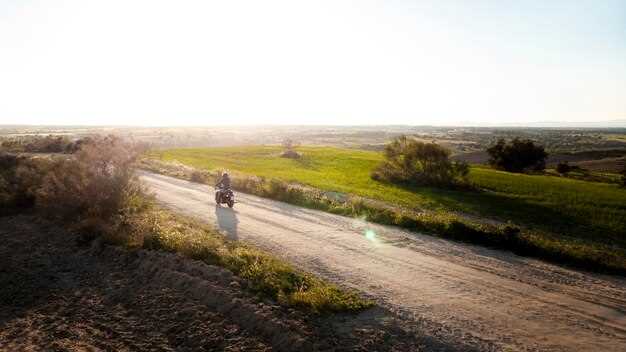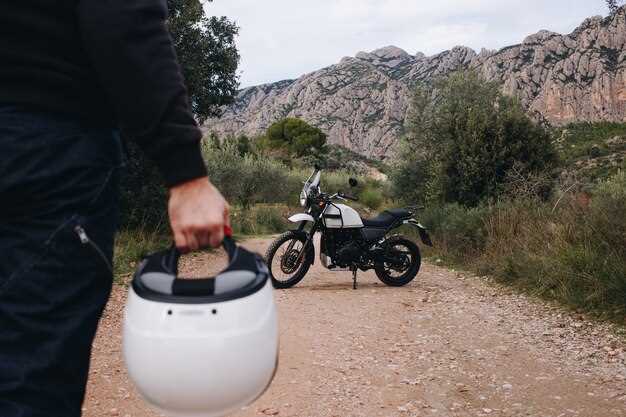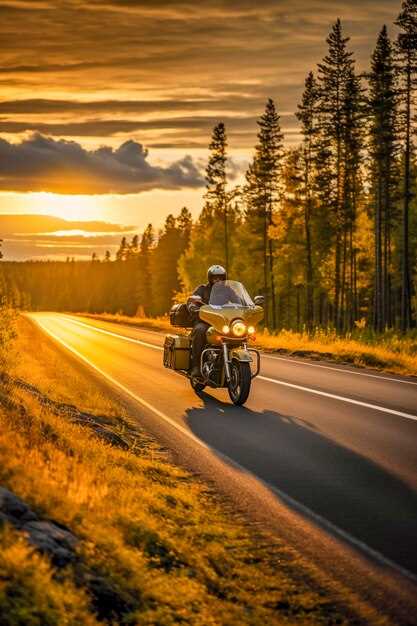

For motorcycle enthusiasts, the thrill of the open road is unmatched. Adventure touring combines the love for riding with the allure of exploring diverse landscapes. The United States is home to some of the most breathtaking routes that cater to riders seeking both challenge and scenic beauty. From coastal highways to rugged mountain trails, the variety of terrains offers something for everyone.
Exploring the great American outdoors on two wheels can lead to unforgettable experiences. Each route presents its own set of challenges, whether it be winding turns, varying weather conditions, or the chance to encounter local wildlife. Riders can immerse themselves in the culture of different regions while enjoying the freedom that comes with traveling on a motorcycle.
This article highlights the top 10 adventure motorcycle routes across the US, meticulously curated to ensure a mix of exhilarating rides and stunning vistas. Whether you’re a seasoned rider or a beginner looking to embark on your first long-distance journey, these routes promise to create lasting memories and ignite your passion for adventure.
Choosing the Right Gear for Your Motorcycle Journey
When embarking on an adventure motorcycle journey, selecting the appropriate gear is essential for safety and comfort. Begin with a high-quality helmet that meets safety standards. Look for features like a full-face design and good ventilation to ensure both protection and comfort during long rides.
Invest in a durable jacket made from weather-resistant materials. A jacket with multiple layers and removable thermal liners can adapt to changing weather conditions. Opt for one that includes armor at critical impact areas like shoulders, elbows, and back for added protection.
Pants specifically designed for motorcycling should be prioritized over regular trousers. Look for padded and reinforced options that provide abrasion resistance and comfort during extended rides. Waterproof or breathable materials can enhance your experience in varying climates.
Footwear is another critical component; choose riding boots that provide ankle support and are made of durable materials. Waterproof boots will keep your feet dry in adverse weather, while slip-resistant soles ensure good grip on the pegs and ground.
Don’t overlook gloves, which serve as both protection and comfort. Look for gloves that fit well and offer a balance of insulation and breathability. Touchscreen-compatible options allow for easy smartphone usage without removing gloves.
In addition to protective gear, consider luggage solutions. Hard cases or soft saddlebags provide essential storage for tools, spare parts, and personal items. Ensure that your luggage is secure and doesn’t interfere with your riding posture.
Finally, always carry essentials such as a first aid kit, multi-tool, map or GPS device, and hydration supplies. Being prepared with the right gear ensures that your motorcycle journey is not only enjoyable but also safe.
Essential Packing Tips for Long-Distance Rides

Packing for a long-distance motorcycle ride requires careful consideration to ensure that you have everything you need without overloading your bike. Start by creating a checklist of essentials to streamline your packing process. This will help you avoid forgetting crucial items and keep your luggage organized.
First, prioritize safety gear. A quality helmet, gloves, jacket, pants, and boots should be at the top of your list. Consider packing an extra pair of gloves and thermal layers for varying weather conditions. Visibility is key; reflective gear can enhance your safety, especially during low-light conditions.
Next, focus on tools and maintenance supplies. A compact toolkit, tire repair kit, and extra fuses are essential for roadside repairs. Don’t forget to bring along a first-aid kit to address minor injuries quickly while on the road. Additionally, a portable phone charger or power bank is crucial for keeping your communication devices operational.
For navigation, whether you use GPS, maps, or both, ensure you have reliable access to directions. Carry a physical map as a backup in case of poor signal areas. Consider also packing a small notebook and pen for notes on routes, gas stations, or landmarks.
Food and hydration are vital for sustaining you on long rides. Bring a compact cooler or insulated water bottle to stay hydrated, along with lightweight, non-perishable snacks like granola bars or trail mix. These will provide energy boosts without unnecessary bulk.
When it comes to clothing, pack versatile layers that can be mixed and matched. Opt for moisture-wicking fabrics, quick-dry items, and a waterproof layer to prepare for various weather. A spacious, durable bag or saddlebags can help you manage your items efficiently, while ensuring the weight is evenly distributed on your bike.
Lastly, consider the weight of your packed items carefully. Distribute heavier items low and towards the center of your bike for improved handling. Keep frequently accessed items, such as snacks, maps, or water, easily reachable to avoid unnecessary stops during your journey.
Navigating Different Road Conditions and Weather Challenges

Adventure motorcycling presents unique challenges, especially when it comes to road conditions and weather. Riders must be prepared for a variety of environments, from smooth highways to rough trails.
Understanding Road Conditions
Different surfaces impact handling and speed. Paved roads often provide the best grip, while gravel or dirt can be unstable. Adjust your tire pressure for off-road segments; a lower pressure can improve traction. Familiarize yourself with the characteristics of common surfaces before embarking on a trip.
Weather Preparedness
Weather can change rapidly, affecting visibility and road conditions. Carrying appropriate gear, such as waterproof clothing and thermal layers, ensures comfort and safety. Rain can make roads slick, increasing stopping distances. Always reduce speed and maintain a greater following distance in wet conditions.
Temperature Variability
Adventurers may encounter extreme temperatures, from scorching heat to freezing cold. Dress in layers to adapt quickly to temperature changes. Be aware that cold weather can reduce tire performance and battery efficiency. Check weather forecasts regularly and be ready to adjust your route as necessary.
Dealing with Obstacles
Wildlife and debris can present unexpected hazards. Remain vigilant, especially in rural areas where animals may cross the road. If you encounter unexpected obstacles, such as landslides or fallen trees, have an alternate plan for navigating around them.
Coping with Fatigue
Long rides can lead to fatigue, which impairs decision-making and reaction times. Schedule regular breaks to rest, hydrate, and refocus your attention on the road. A well-planned daily itinerary that allows for rest stops can greatly enhance safety and enjoyment.
By understanding these elements and preparing accordingly, riders can navigate a variety of road conditions and weather challenges, maximizing the adventure motorcycling experience across the U.S.






